Click on this image for a larger view.
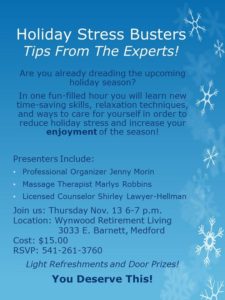
 I just have to crow about being ahead of the curve with my 8 ways to Say No blog in August.
I just have to crow about being ahead of the curve with my 8 ways to Say No blog in August.
Since then, Real Simple magazine featured the article ‘The Nicest way to say No’ on the September cover. The same month, Kathie England taught ‘8 Ways to Say ‘No’ ‘ in her Time out for Success teleclass. Finally, Grants Pass radio station K-LOVE aired a piece about saying ‘No.’
What is it about saying ‘No?’ Why is it so difficult for so many people, especially women?
Why Saying ‘No’ is so hard to do:
Reason 1: You are unsure of your priorities
If your goals are clear and you know what needs to be accomplished today or this week, saying ‘No’ will be much easier. However, if you have not planned the week and have only a vague idea what you need or want to accomplish, you become vulnerable to outside requests for help.
Reason 2: Your fear of social awkwardness
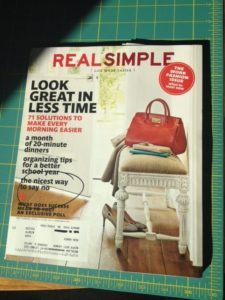 A legitimate fear: it is much easier in the short term to say ‘Yes’ and have the asker be happy and grateful to you. Nobody likes being told no. See Tip #2 below!
A legitimate fear: it is much easier in the short term to say ‘Yes’ and have the asker be happy and grateful to you. Nobody likes being told no. See Tip #2 below!
Here are 3 tips to make it easier: England shared from McKeown’s book:
You are not saying no to the friendship, it doesn’t mean you don’t want to be friends anymore; it does mean you are unable to say yes to their request for your time, money, etc. This requires validating the asker and, in some cases, explaining why it won’t be possible for you.
People pleasers are the ones that often get in trouble by saying a reflexive “Yes.” Women especially have trouble with this. You want to be the teacher’s pet! Only it’s not school, where you need to please the teacher for a good grade—it is life. You don’t have to please the president of your networking group, the fundraiser, the PTA president, the principal, etc—you have your own priorities of family, work, your own interests. Saying “yes” to everything will ensure you do not have time for yourself. The end result will be burnout and resentment if you are neglecting your own needs to help others.
Think about it. Just because you like the person or you believe their cause is a good idea is not enough. Maybe you would like to help, but deep down inside you know you don’t have time or energy to do it or have no intention of doing it. It is much better to decline at the outset. This way, you don’t set up false expectations.
When I was in college, I worked for a firm selling credit cards to people. I was horrible at it, but one thing I learned: I would rather have a prospect interrupt with a “No” at the beginning of the call than listen to my whole pitch before saying no. They wasted time for both parties.
The same applies to people asking for a favor. If you say yes but don’t mean it, they are counting on you. But if you back out or don’t follow through, they won’t know until the last minute and then they are in a bind. That is when hard feelings are created. It is much better to give a decisive ‘No’ at the outset to avoid setting up false expectations (their end), guilt (your end), and the fallout that will inevitably ensue.
So, armed with this new knowledge and motivation to be true to your own priorities, you will be able to say “No”!
How did this post help you? I would love to hear your story!
Content from Kathie England’s teleclass is based on Essentialism by Greg McKeown.

Saying No Graciously
What do you believe about people who say no to good causes?
A recent client of mine I’ll call Kerry is retired. So she has lots of time on her hands, right? She can finally get to all those projects she has been saving for retirement like spending time with grandchildren, getting her office organized, serving in her church, traveling, gardening, whatever she fancies.
The only problem is: Kerry cannot seem to say no to good causes, and believe me they all seem good. So she piles on the activities, says yes to extra responsibilities like taking a shift at the library, helping with a fundraiser that eats up weeks of her summer, etc. Now Kerry’s plate is full and she has very little time for her real goals. She is spending time helping other people with their goals, and has lost sight of her own, or has shuffled them to the bottom of the to-do list.
Also, Kerry does not have a minute to herself! What about that list of books she has been wanting to read but never gets to? She needs some time to unwind and relax, but she is busy from dawn to dusk.
“Saying no is not about selfishness but about self-respect. You’re standing up for what is right for you.”
~ William Ury, PhD, Harvard Professor and author of The Power of a Positive No: How to Say No & Still Get to Yes.
In Kerry’s case, which is so common among women, she has “Yessed” her way into a very busy schedule and now has little time for relaxation or her own projects like getting organized and gardening.
If saying yes has gotten you into a similar pickle, here is how to say ‘No’ guilt-free so it doesn’t happen again.
Gracious ways to say NO without Guilt:
Remember, no one is irreplaceable:
“If it’s not brain surgery, others can do it—maybe not with your pizzazz, but it will get done and the cosmos will not explode in the process.”
~ Susan Newman, PhD, author of The Book of No: 250 Ways to Say It—and Mean It and Stop People-Pleasing Forever.
So next time you are pressured to say yes—even if it is a worthy cause—remember your goals, use the tips and stay within your boundaries. Be strong. It does get easier with practice!
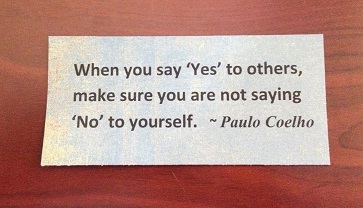

You Can do Anything for 30 Minutes
It is true you can do anything for 30 minutes. The Fly Lady likes to say you can do anything for 15 minutes, but for projects requiring more brains than brawn, 30 minutes is the ticket to banishing procrastination.
This is what I told a time coaching client: Just work on your business plan for 30 minutes. I call it the 30 Minute Rule. This advice applies to any project you may be putting off. Even if you don’t want to do it, you will make progress and feel that you accomplished something worthwhile.
What are the things that have kept you from starting a project in the past?
Procrastination
Why do we procrastinate? Fear . . . either it is too big of a task, we don’t have the skills to do it, we need more information, the assignment was unclear, and so on. The reasons for procrastination seem to be as varied as the persons who procrastinate. (See my blog about Procrastination.)
The first step to overcoming procrastination is uncovering the reason for it. Once you ask yourself some delving questions. Figure it out. Talk it over with a trusted friend or spouse. Once you uncover that, you can progress and deal with it. I am not a psychologist, but this strategy has worked for me and my time coachees.
A recent client, pet trainer Kaye Geyler, needed to work on her business plan. She just started her business several months ago and knew it was important, but couldn’t get herself to work on it. The 30 Minute Rule worked wonders for her. We decided the next steps she needed to take and she committed to work on it for at least 30 minutes. It worked well for her. She told me later, “Even if I don’t want to do it, I can make myself do it for 30 minutes.”
So, instead of procrastinating the business plan, she used the 30 Minute Rule to motivate herself to get started.
And here’s a little secret: once you get started on it, you usually get more enthusiastic and the ideas start coming, so you end up spending more than 30 minutes working on it, which results in more progress and gives you an incredible feeling of accomplishment.
Failure to Schedule it
This is the easiest of the 3 issues to fix. If you want to do a project, know how to do it, but aren’t getting to it, the solution is simple: just put it in your schedule. Pick a day and assign a time when you will get started on this. Then put a reminder on your phone, computer, or planner. You may need one day a week for this, or more. It is helpful to get into a routine time for the job, like every Tuesday and Thursday at 10 a.m., for example. Soon it will be something you don’t need to remind yourself to do; it will be a habit. Use this technique to create the positive changes you are craving.
Lacking time to do it justice
Another habit that sabotages getting projects done is talking yourself out of it. You look at the clock and your morning calls have taken too long, so now you only have 35 minutes to work on it before your next appointment. You have 2 options: work on the project using the time you have, or do a smaller task and rearrange tomorrow’s schedule so you can work on it then.
Kaye told me: “I don’t look at it as procrastination if I shuffle things around in my day or week because I am planning to do it (have a time set aside).”
Another client, Josiah Higgs, agreed. “Developing the commitment to do something at a particular time is important to me, but I can be flexible when I need to be.” He knows that when he has a task planned, even if an emergency comes up at Medford Automotive, he will still get to it by adjusting his schedule to fit it within the next few days.
Even if you only have 30 to 40 minutes when you were planning to work on it for an hour, just start it. Apply the 30 Minute Rule. Brainstorm, create an outline, identify next steps, make calls, etc. What can I get done in this smaller bucket of time? Before you stop, also make a note of what your next step needs to be.
The Outcome
Kaye experienced success. Having a strong and specific plan is crucial to growing Rapport Pet Training. She told me: “I did more with my business plan in April than I did in the past four months!”
You too will see results when you apply this technique. What project or goal did you think of as you read this? Apply the 30 Minute Rule and experience amazing results!
Let me know how this helped you by entering a comment!

Do you ever feel this way?
Overwhelmed? Try these 8 Strategies
Okay, I am going to level with you—these past few weeks, I have felt overwhelmed by all I want to do. Even though I am a time coach, sometimes I will get caught up in a mistaken belief that I need to do it all. So what did I do for relief?
The first thing I did: Scheduled a massage on my day off.
Next, I promised myself I would not schedule anything else in my busy week. I told my husband, so he would keep me accountable. This is the second big tip: do not take on any new projects or training. Delay them until next week (or later) whenever possible. This is NOT the time to learn new things, when you are barely keeping your head above water.
Remember, if you are feeling overwhelmed: start where you are. See what is causing that feeling. Is it because you have too much to do? Or Is it because you don’t know what you have to do? Both cause anxiety. The answers will guide your next action.
I found it immensely helpful to plan my week and see just what I needed to do to get ready for my clients, meeting, and speaking engagement. I wrote it all down. When you see it there on paper and it is no longer an unknown, you can experience some relief.
But sometimes just seeing it written doesn’t help and you are still overwhelmed. At this point, I find it helpful to get some perspective. Take a step back, look at the bigger picture. What are your main goals? Are there any items on your to-do list that do not fit or that seem less important now? So you are reevaluating, asking yourself: What do I really have to do? The key is not working longer hours, spending more time away from home and slogging through your work. Instead, pare down your tasks to the essentials.
If things are really getting to you, a breath of fresh air and a 15 minute walk will help. Getting outdoors, preferably in nature, will relax and rejuvenate you. Your perspective will shift, and your problems seem smaller when compared with the grandeur of the great outdoors. I particularly find the sound of water to be soothing.
My last tip: Make sure to take time to exercise. This time investment will make a huge difference. The endorphins will help relieve your stress, you will have more energy and be healthier. It is a win-win-win. And I personally believe your productivity increases when you exercise. A morning walk will wake up your brain and get you ready to start your day. You really can’t afford to skip exercise.
Reward yourself on the weekend by getting out on a hike, gathering with friends, or having a massage. Take the time to refresh yourself and try not to think about work. On Monday morning, you will be fresh and ready to tackle the week.
To recap: when you are overwhelmed, start where you are. Don’t take on projects or training, take a step back for perspective, re-evaluate what you must do, pare down your tasks, take a restorative break, take time to exercise, and truly take the weekend off. These 8 tips will be a lifeline to pull yourself back up onto solid footing.
 Decisions, Decisions
Decisions, Decisions
How much time do you spend making decisions? What to write about, should I exercise, who to call next, which task on your to-do list is next, which emails to answer, etc. Each day we are faced with a myriad of choices. Some decisions don’t take long, but some eat up our time. By minimizing small decisions, I help my coaching clients gain 1 hour (or more) every day. We accomplish this through use of a time map and weekly planning.
One of the great benefits of having a Time map for your week is that it saves so much decision-making time. Here is an example of small decisions eating up your time. Say you have a 7 hour workday and you switch activities 7 times. In the morning, you take 10 minutes deciding what to do first. You work on Quickbooks. Then, you take 10 minutes to decide your next action. And so on. If you use 10 minutes each time you switch activities, and you switch activities each hour, you have spent 1 hour and 10 minutes on decisions. What a good time map does for you: instead of losing that 10 minutes, one quick glance at the map and you know what type of activity to do next. And this is a plan you made deliberately by yourself or with a time coach, when the pressure of the day is not coming down on you. You’ve used it, tweaked it, and arranged it so that your schedule makes sense to you.
What is a time map, you ask? It is a customized guide to the week. I create a custom time map for all those I coach. In it, we have set aside time for achieving goals, and for the main activities they need and want to do. Clients who use their map report being more productive, less stressed, and feeling a great sense of accomplishment at the end of each day. They feel in control and assured that everything important has gotten done.

Before you can make a plan or Time map, you need to know where you want to end up. What are your goals for your business this week, this month, or this year? Once you have goals as a guide, your North Star to steer by, some tasks become a priority and others fall by the wayside.
That brings me to my next point: Take time to plan your week and prioritize your tasks. Going back to the mariner term—if you don’t have a map, you will wander around the ocean of choices and take much longer to arrive, if you do manage to arrive.
Planning your week doesn’t have to be laborious. Thirty minutes to an hour is plenty of time. I encourage my clients to make time for planning either Friday or Monday. They report their week goes smoothly and they feel more in control when they set aside the time to do this. Planning is the most beneficial action you take to create a successful week. It leads to deep feeling of accomplishment each Friday.
Typically, I check my calendar for the week and make my to-do list during this time. I then look at my goals, and my time map, to make sure I plan time for the most important activities. It helps me keep a balance between work and family. If I start to get caught up in getting Everything done before 5, a glance at my time map helps me remember my main priority late afternoon is my family. If I have done my job properly, the most pressing tasks of the day are done before then. Another benefit of planning: by looking at my schedule first thing Monday, I notice if I have any overlapping appointments. Also I see if I’ve planned enough transition time between activities, including travel time.
To review: If what you are doing isn’t working, do something else. Plan your week. Map out a productive week by yourself or with a Time Coach. Save at least an hour each day, using it to make more money or go home early! It really is a formula for success.
What would you do with your hour?

Do you like stories? I do! My last tele-class with Margaret Lukens, veteran organizer, coach and NAPO educator, had a story about a cookie. I had signed up for the class to learn how to better help my Time and Organizing clients start new habits.
The story: Charles Duhigg, author of The Power of Habit, did an experiment on himself. He had a habit he wanted to change. Every day around 3:30 p.m. he would get up from his desk, go to the cafeteria, buy a cookie and eat it while chatting with friends. Problem was, he started to gain some weight. He noticed, and his wife noticed. He decided to break the cookie habit.
In his book he says to change a habit you must identify the routine surrounding the habit. So he broke it down to each small action this time of day. He described every small thing he did at this time of day, trying to discover the cue, the trigger for the cookie habit.
Well, after weeks of experimenting, he discovered the cue was the time of day. But what was his reward? Every habit has a reward, he postulated. Did he feel just as good if he ate an apple, for example? He did. After trying lots of combinations, he realized his reward was actually chatting with friends.
His next step was to create a plan to change the habit. His plan included following his cue to get up from his desk, but instead of getting a cookie, he just went straight to his friends’ offices and chatted with them for 10 minutes. In this way, he still got the social reward he craved without the weight gain! Of course, his discipline wasn’t perfect and he wasn’t able to quit “cold turkey,” but eventually he kicked the cookie habit.
What I love about Lukens’ class is this: she always asks each of us great questions that cause us to think about our own habits. The habit I want to change is to stay focused on tasks that require concentration even when I think of something else that needs to be done. It was a powerful moment when she helped me realize the strength of my fear that I will forget that newly remembered task if I don’t write it down right away. My reward is the peace of mind that I have it captured.
So what I decided to do: instead of getting up to write personal to-do’s on the whiteboard, I will capture them on a Post-it at my desk, and stick it to the whiteboard later that day. It’s not perfect, but it is better.
What is one habit that is stealing your time? Angry Birds, TV, Facebook? Try Duhigg’s method on yourself. Experiment. Be patient with yourself; it can take up to 254 days** to establish a complex habit. It usually helps to have someone to keep you accountable, and I would be happy to be there for you. Tell me your habit and I’ll check in with you monthly.
**research by Phillipa Lolly, Great Britain
 Recently, I had the pleasure of picking pears at a pear farm run by the Church of Jesus Christ of Latter-day Saints. The light passed through green leaves in the morning light, and it seemed a green glow surrounded the trees. We worked quickly, trying to fill as many bins as possible (the pears go to an LDS cannery from which they get distributed freely to needy people throughout the world). It is a bit tricky to find some of those pears, because they are hiding in and under the leaves. But even a novice can fill many containers quickly when there’s a plentiful harvest. The big aha for me: sometimes when I would reach for a pear, I had two pears sharing a stem. At first I randomly selected which of the two pears to pick–whichever one I reached first. If I chose the smaller of the two the larger one sometimes fell to the ground, making it unusable. (Once on the ground, pears cannot go to the cannery.) Faced with a choice, I trained myself to pick the biggest, most plump pear. If I could only have one, I wanted it to be the biggest pear. If I had to sacrifice a smaller one, so be it. So I learned to get the most pears possible–or have success–I had to reach for the biggest one.
Recently, I had the pleasure of picking pears at a pear farm run by the Church of Jesus Christ of Latter-day Saints. The light passed through green leaves in the morning light, and it seemed a green glow surrounded the trees. We worked quickly, trying to fill as many bins as possible (the pears go to an LDS cannery from which they get distributed freely to needy people throughout the world). It is a bit tricky to find some of those pears, because they are hiding in and under the leaves. But even a novice can fill many containers quickly when there’s a plentiful harvest. The big aha for me: sometimes when I would reach for a pear, I had two pears sharing a stem. At first I randomly selected which of the two pears to pick–whichever one I reached first. If I chose the smaller of the two the larger one sometimes fell to the ground, making it unusable. (Once on the ground, pears cannot go to the cannery.) Faced with a choice, I trained myself to pick the biggest, most plump pear. If I could only have one, I wanted it to be the biggest pear. If I had to sacrifice a smaller one, so be it. So I learned to get the most pears possible–or have success–I had to reach for the biggest one.
With all the reaching, bending, twisting and heavy lifting I did that day, my shoulders and back were sore the next day! Whenever I used those muscles over the next few days, I definitely remembered picking pears. My effort caused some pain, yes, but the success and sense of accomplishment was well worth the effort.
This has application in life and business. They say it’s better to aim for the stars and miss than aim for the mud and hit. I aimed for the biggest, best pear, and I need to do that in business too in order to be a success. It’s easy to say, I’m not ready for that market yet, I’ll stay in this smaller, comfortable one, serving the same kind of clients I have been for years. I recently had a conversation with Barbara Hemphill, an organizer I respect greatly. She advised me to decide on the direction I wanted my business to go and focus all my advertising, networking and budget there. Otherwise, she argued, I am really trying to promote two services and my resources are divided. In order to follow her wise words, I would need to let go of marketing for home organizing. That is a scary move because right now a large percentage of my business comes from homeowners. So in order to grow in the direction I see Efficient Spaces going, I have to sacrifice some comfort by seeking out larger companies.
Reaching for success is just like reaching for the best pear. You have to look for the opportunity, sometimes looking underneath the leaves, at all the possibilities. You also have to want it. You need to be ready to sacrifice, even go through some discomfort or growing pains in the process. Ask yourself why you are reaching for that pear, that goal. Why is it important to you? What is your motivation?
My motivation for getting a multitude of pears was to serve others, to give a hand up from unemployment or poverty. My Number 1 motivation for Efficient Spaces’ success is to make my clients’ business more productive and profitable by sharing my unique spacial and time management skills.
Success: Are you willing to reach for it even if you have to stretch to get it? What is your next step to take your business to a higher level?


What did I do on vacation? I played, of course! I went to my Dad’s, the home in Maine where I grew up, and organized about 2500 photos.
This is a great summer project for those long, slow summer afternoons when you just want to stay close to your air conditioner.
2500 photos: For me, projects like that are fun. I got to look at all the photos my Dad had in albums, which spanned from ancestors in the 1700s to the birth of my brother Dan’s most recent baby. That is why it’s fun for me, I’m really into pictures. They tell a story that words sometimes cannot capture.
I’m not going to tell you it was all perfect and I didn’t have some rough moments, especially with the odds and ends, the pictures that didn’t seem to fit in any of the categories I’d set up . . . that is the hardest part for me.
And I was wishing for a more flexible album type, one which had clear pockets pages that could be removed and shuffled around when I discovered photos later that should have been in that album. But as my Dad reminded me, it doesn’t have to be perfect!
Photo Safety
First things first. And that would be . . . photo safety.
Make sure to get your photos out of magnetic albums. To spot a magnetic album, look for sticky pages that have a whole-page plastic sleeve that peels back. Also, the glue will have a striped look. When you bought the magnetic albums, the glue was white. In a few of my Dad’s older albums, the glue around the edges of the page was a deep yellow color. And a few of the photos I removed had some “tracks” from the glue.
When that yellow spreads so that it is under your pictures, the acid in the glue will start a slow aging process in your pictures. If left in there long enough, pictures will show the stripe pattern of the glue that is underneath them. Yuck! It is time to get them out!
Seriously — It is better to take them out, rub off any glue residue from the back of the photos, and stick them in a shoebox than to have them in that album. Preferably a shoebox lined with acid-free paper, of course.
Finding Patterns
In order to sort that many photos, I did just one album at a time. I took out the photos that were out of order or didn’t ‘fit’ in that album, which sometimes meant most of the album.
After a while, I noticed patterns–which is what organizers do !–and each album became a certain time span or theme. For example, my Mom had started a Christmas album, which had all the Christmas pictures from our childhood to the present. In my picture search, I discovered several years’ worth of earlier Christmases, so I added them at the beginning of the album. It’s important to work with what you’ve already got and make it better.
At the end I had several small stacks of photos that didn’t ‘fit’ in any of the albums, or that should have gone in an album which was full. This was one of the times when Dad reminded me it didn’t have to be perfect. I had to make some hard decisions. One of those stacks of pictures was from the weekend we had Kate blessed. She is our first child. I felt a little guilty for taking them out of the album they had been in. But in the end, it worked out well and she got to be in an album with her cousins.
It all turned out well by the end of the day. Dad’s pictures were safely separated from the magnetic pages, and well organized into pocket albums. A good day’s play–I mean–work!
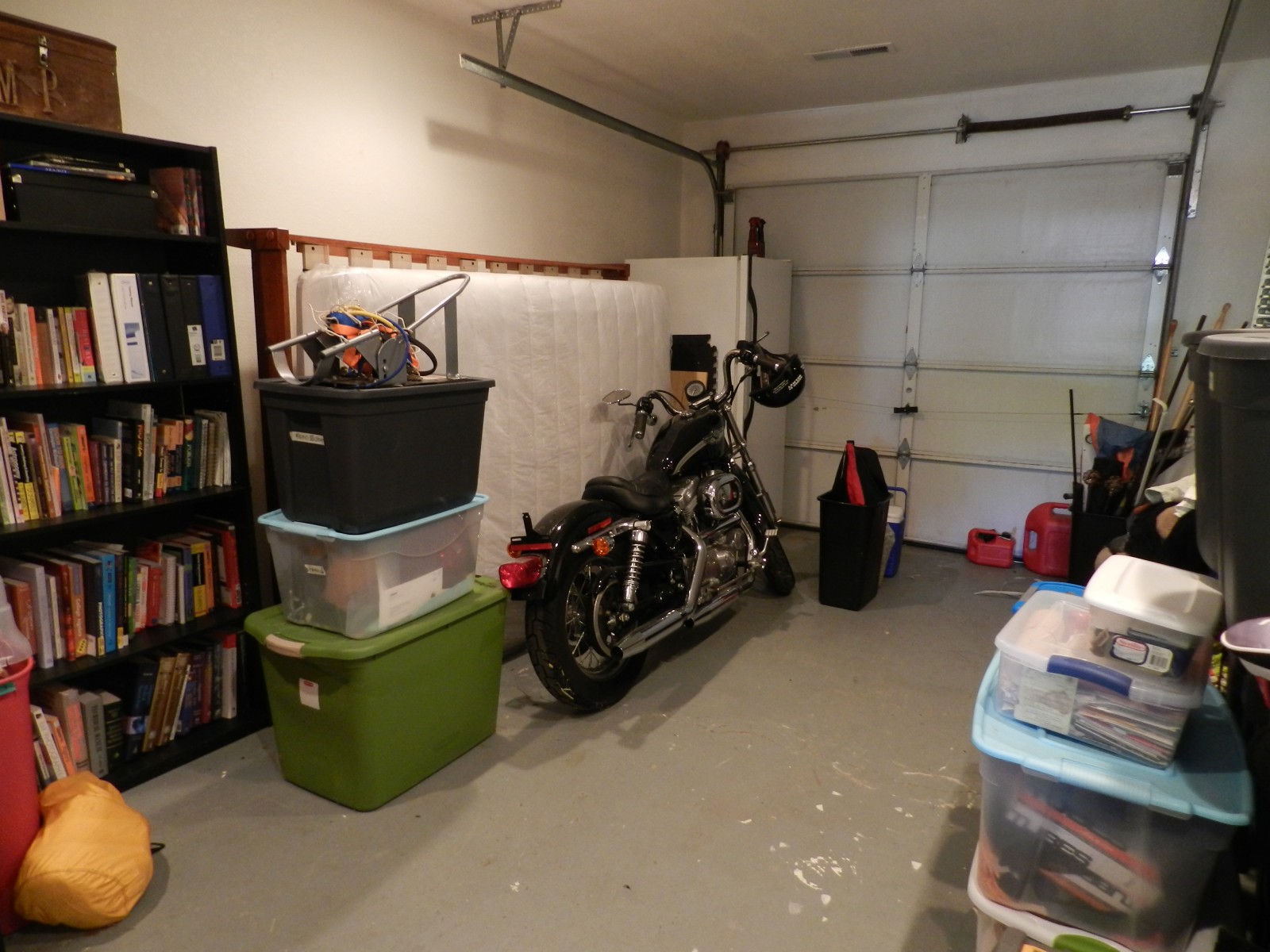
I saw so many Garage Sales and Yard Sales this weekend! Spring has definitely sprung. I love to see sales around the city, because it means people are cleaning out their surplus.
Good for you! I say.
We tend to accumulate “stuff” in the good old US of A. Trends, gadgets, great deals that cause us to buy way more of one item than we would ever use and our own desire to surround ourselves with pretty things and feel prosperous– all contribute to our society of over-indulgence.
A lot of that ‘stuff’ we buy, we love it for a little while, and then we stop using it. After some time passes, we realize we haven’t used it in a while, so it either stays where it is, becoming clutter, or you take it out to the garage, to sit there for who knows how long.
Oh, I know how long–until your next garage sale, that’s when!
See what I mean? THAT’s why I love garage sales. When you know you are hosting your annual spring garage sale, you tend to really evaluate the stuff in your closets, attic/basement and garage. For me, I know I actually go through the house LOOKING for things that we haven’t used in a while (especially kids toys and clothes). There’s nothing like an upcoming garage sale to motivate you to purge! It actually creates a sense of urgency to find things you haven’t been using, things that don’t have a future with you.
Though I’m not an expert at garage sales, I am an expert at purging. Here are some questions you can ask yourself as you are evaluating what stays and what goes to the garage sale.
Ask yourself:
• Do I use this?
• Do I love it?
• Does this item have a future with me or just a past?
• Am I ever going to be this size again?
• How many golf balls do I need, anyway?
• Does (insert name) even care about this _____ I am saving for him/her?
• What’s the worst thing that could happen if I sell this/ throw it out?
A final word: Be disciplined with the things left over from your garage sale. Take the lot to a thrift store or the dump that day or the next. DON’T save them for next year’s yard sale, despite the temptation. The cost to
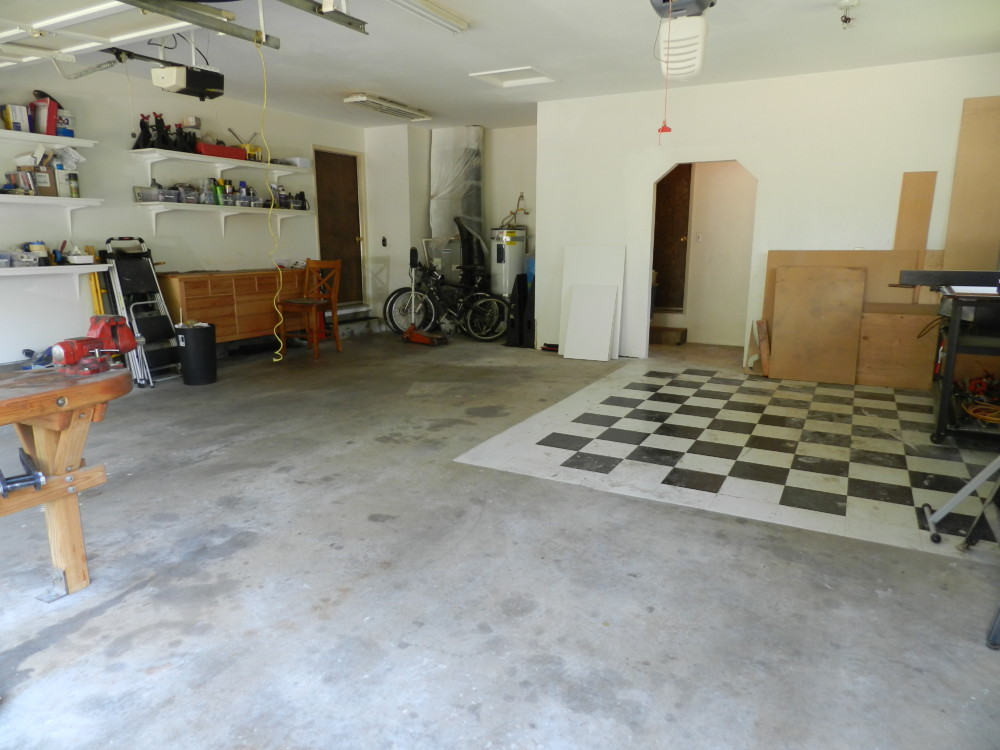
This organized Garage brought to you by Efficient Spaces organizing!
store that ‘stuff’ will outweigh any amount you might earn selling it later. Think of your garage as prime storage space. You don’t want to clutter it with stuff you already know you no longer want or use.
Be ruthless!
Photo courtesy of Monkey Bar Storage
